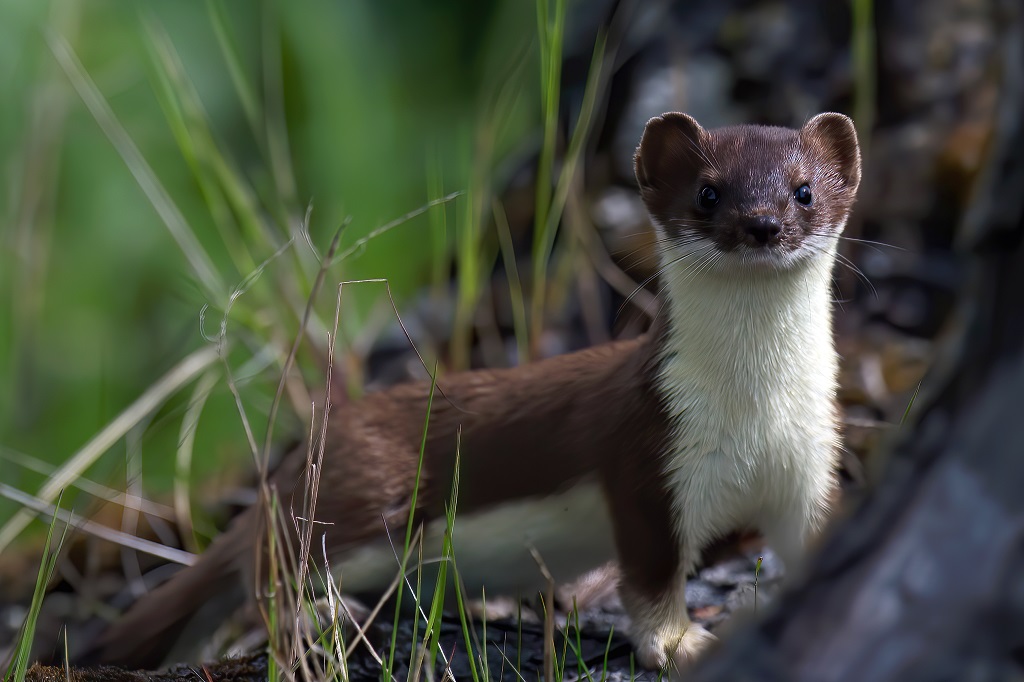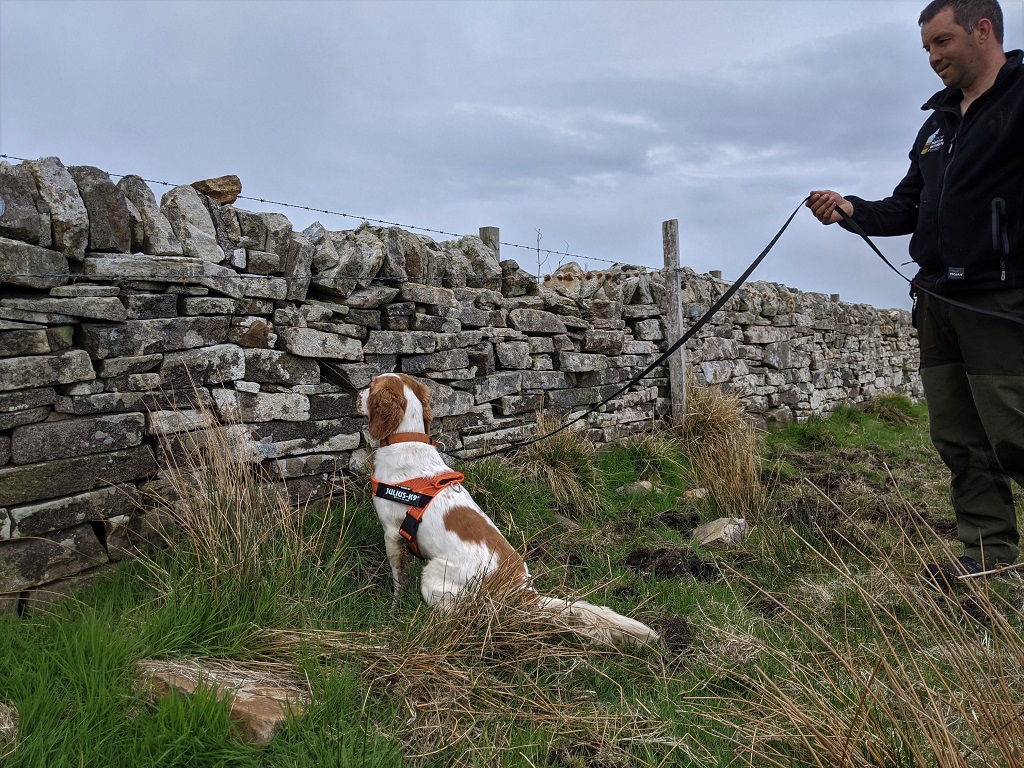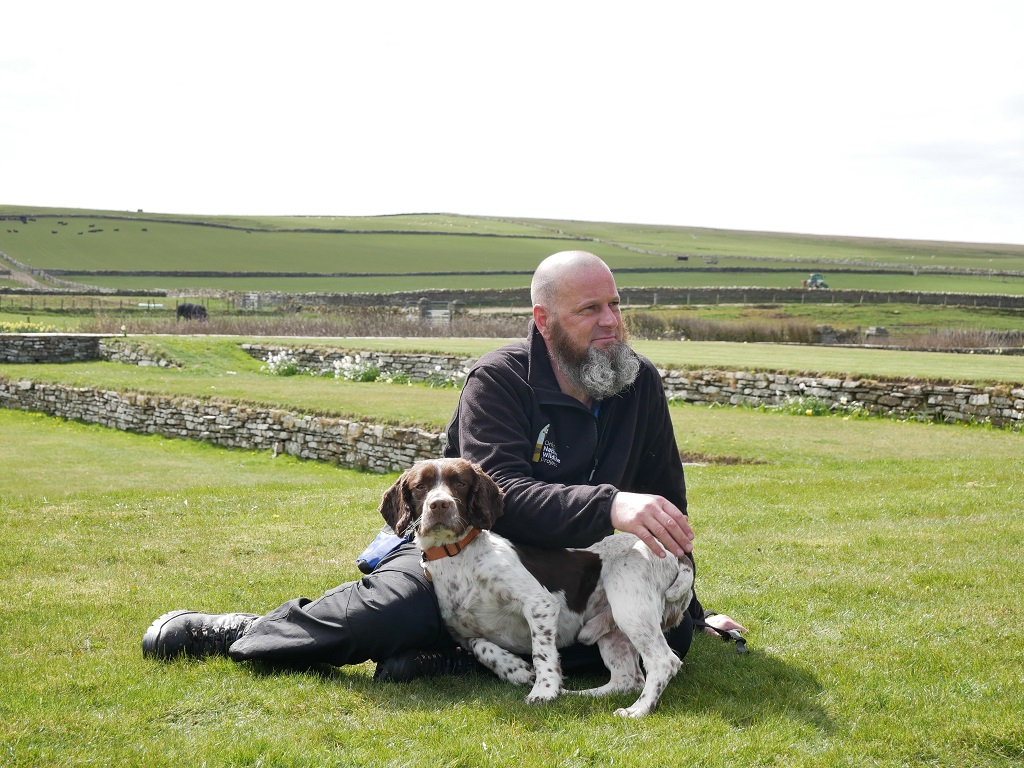
Europe’s first stoat detection dogs arrive in Orkney
Three specially trained conservation detection dogs are the most recent team members for a project to safeguard Orkney’s native wildlife.
The trio will be using their sensitive noses to assist the world’s largest stoat eradication.
The first stoat detection dogs in Europe have arrived in Orkney. They are the latest team members for a project aiming to safeguard the future of Orkney’s native wildlife and economy by removing invasive non-native stoats and ensuring they do not return in the future.
The dogs have been trained specifically for the Orkney Native Wildlife Project to indicate the scent of stoats to their handlers. They arrived in Orkney at the end of April and have spent the last two weeks in an intensive training course designed to test their handlers’ skills. During the course, the dogs – Scout, Thorn and Spud – were also each matched with their new handler.
The bond between a detection dog and their handler is critical to them being an effective team and therefore the matching process is a serious part of the training. Now, these three new pairings are ready to begin their important role in the world’s largest stoat eradication project.
Stoats are notoriously difficult to detect particularly when their populations are at low densities. Dogs have around 300 million scent receptors in their nose and their ability to pick up scent is 40 times greater than humans. Therefore, the canine team members will help establish the absence of stoats more efficiently and effectively than human efforts to report sightings and monitor for signs alone.

A stoat (Photo: Agami Photo Agency / Shutterstock)
Like other detection dogs, they have been rigorously trained to the highest standards akin to those used to train drug or bomb ‘sniffer’ dogs. The difference is that Scout, Thorn and Spud are trained to identify signs of stoats and to indicate this to their handlers.
Frank Holmes, Kyrus Ltd, said:’It has been a privilege to have been given the opportunity to train these three stoat detection dogs and be a part of this project. Although it has been a long journey getting to this stage, meeting the handlers and seeing the bond they have started to develop with each dog has been worth the wait.
‘It is reassuring to us that we are leaving the dogs, and the stoat canine detection side of the project, in good hands. Although we may be handing the dogs over to their new handlers, this is no means the end of our partnership with ONWP. We will be back up soon, with additional dogs and will continue to develop the new dog teams as they embark on their journey.’
Along with their handlers, Scout, Thorn and Spud will regularly search high-risk islands close to the Orkney Mainland for signs of stoats as an essential part of the biosecurity efforts to prevent stoats spreading during the eradication. They will also support the trapping team towards the end of the eradication to help find the last remaining stoats.
High-risk islands are those that are currently stoat-free but that are within a swimmable distance of islands where stoats are widespread. Stoats are excellent swimmers and can swim considerable distances (up to 3.5 km) in open water.

Alan and Scout (Photo: Orkney Native Wildlife Project)
The most northerly of Orkney’s 70 islands may be far enough away to have an effective water barrier to stoat incursion via swimming. However, islands such as Hoy, Shapinsay, Rousay, Flotta, Wyre, Egilsay, Eynhallow and Graemsay are within reach of stoats on the Orkney Mainland.
Chris Bell, biosecurity officer for the Orkney Native Wildlife Project, said: ‘Biosecurity measures are essential to prevent stoats spreading from the Orkney Mainland to other islands putting more native wildlife at risk and making the challenge to eradicate stoats even greater. The dogs will completely revolutionise our ability to maintain island biosecurity.’
Being trained to simply target the signs and smell of stoats, means that detection dogs will not attempt to catch any stoats or react to the presence of other species or livestock. No stoats will be harmed by Scout, Thorn or Spud, whose sole job is to determine presence, or hopefully absence of, stoats starting with the high-risk islands.
The dogs live with their handlers as part of the family and following a further bonding period to assimilate learning, they will start working across Orkney.

Grant and Thorn (Photo: Orkney Native Wildlife Project)
Grant Blackley, one of the Orkney Native Wildlife Project dog handlers, said: ‘After the year long delay due to Covid19 it has been wonderful to finally meet and start bonding with the dogs. I have learnt a great deal from the course and look forward to adding the formal stoat detection dog handler accreditation to my experience and becoming operational in the field.’
The Orkney Native Wildlife Project, which is a partnership between RSPB Scotland, NatureScot and Orkney Islands Council, aims to protect Orkney’s native wildlife by removing stoats, an invasive non-native predator that was first recorded in Orkney in 2010.
Stoats are native to the UK Mainland but not to Orkney, where they pose a very serious threat to Orkney’s native wildlife particularly the Orkney vole, hen harrier, short-eared owl and other ground nesting birds such as red-throated divers, Arctic terns and curlews for which Orkney is internationally important and upon which Orkney’s thriving wildlife tourism industry relies.
Find out more on the Orkney Native Wildlife Project Facebook page.
TAGS

